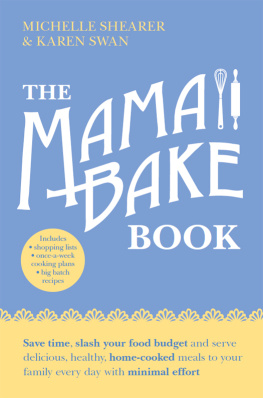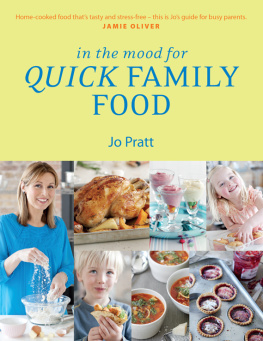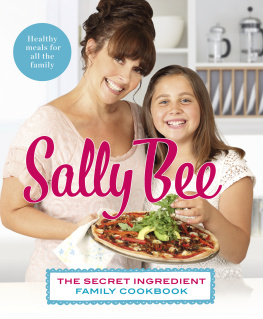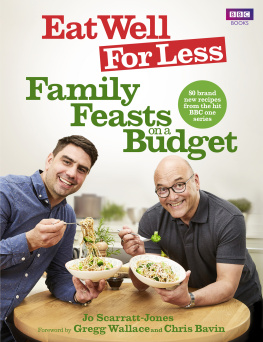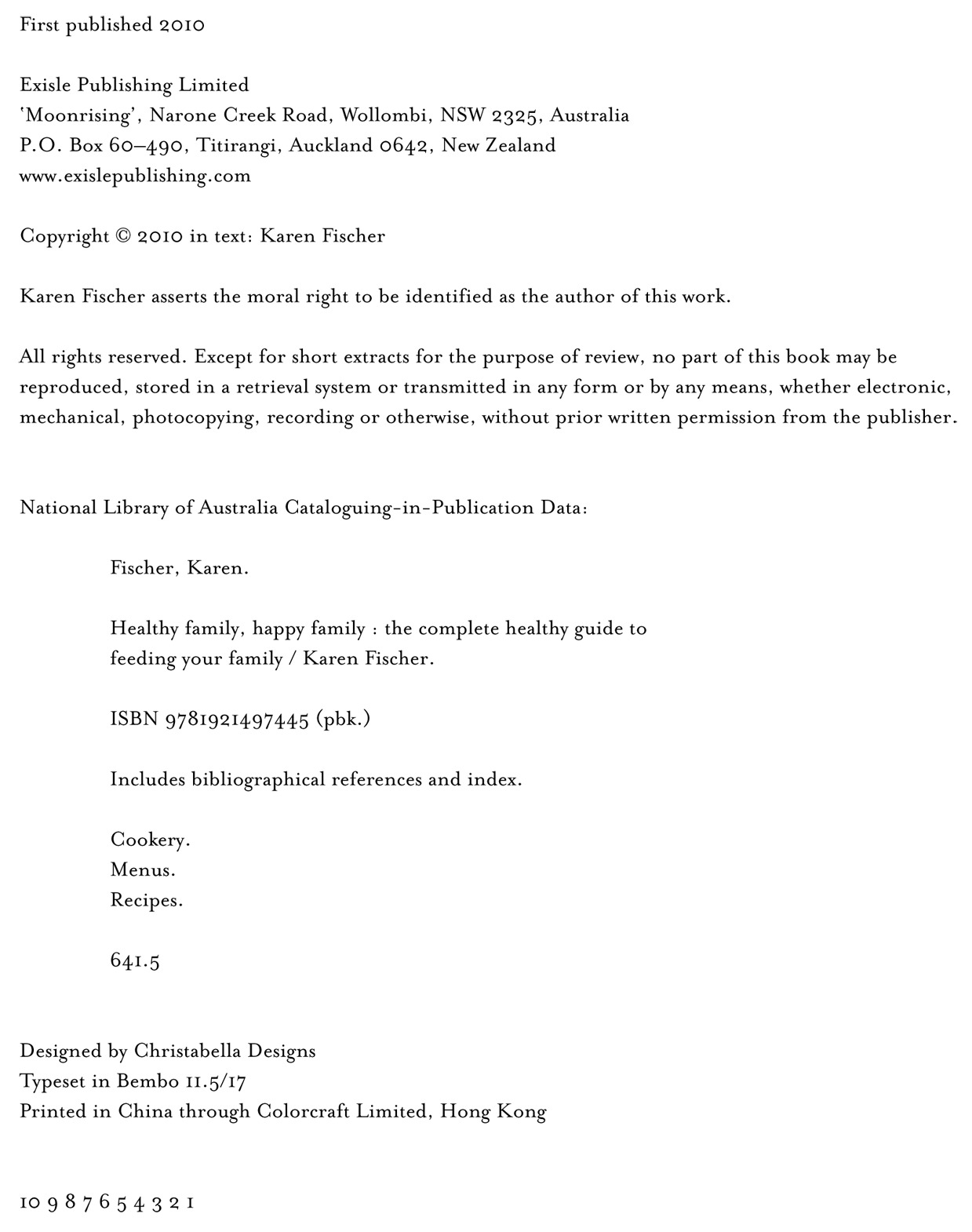Introduction
My daughter was three when anything that resembled plant life suddenly became revolting. She also wouldnt touch tuna, porridge, anything with a hint of spice (or flavour!) and she would suddenly be hungry, again, just before bed. I could have composted for the entire Royal Botanic Gardens with all the nutritious meals I had to throw out each week. Mealtime tantrums are just a part of life, I thought, as another vegetable frittata became destined for landfill. For the next two years I diligently chopped up the carrots, capsicum and anything green from the fridge and popped them on her plate. And later Id scrape the vegies and half the rice and most of the meat into the bin.
Then I read a few scientific studies that revealed how vegies can reduce a childs risk of life-threatening diseases when they grow up. I began to panic. Oh dear, I thought. Was I being a bad parent? Or worse: was I a crap nutritionist? This was the catalyst that led me to discover effective ways to get children eating healthy foods.
For those of you whove lost hope trying to convince your child to eat meals that include spinach, curry or grainy bread, grab a cuppa, head for the sofa and read on. If you worry your child is not eating enough nutritious foods or are wondering how to slot healthy cooking into your hectic schedule, sigh loudly and sit down. This book is designed to help you. More than 90 per cent of parents face these common dilemmas each and every day. You may be the exception. Or you could be one of the majority who want to add a new dimension of fun to your daily activities (and do it while whipping up great family meals). These topics, and more, are covered in the three main sections of this book.
***
Around 90 per cent of parents often have trouble convincing their kids to eat vegetables. However, even if your child consumes most foods, you might want to persuade them to dig your favourite fish curry or savour your nannas famous spinach salad (the meals youve banished since your child first pronounced yuck). Chapter 3, Marketing magic, gives you the tools to fix fussy eating habits, forever.
Years ago when my daughter became a finicky eater I tried a range of strategies to persuade her to eat. I attempted pureing vegetables and hiding them in more appealing foods such as muffins, but it just felt wrong. Ayva was five by this stage, not five months, and I wanted her to eat what I was eating. I didnt want to cook all night so I also bribed her with sugar. Id say, You can have dessert if you eat all your dinner, then Id hold my breath and anticipate the worst. Reluctantly she ate, complaining the whole time. Great. But then she held me to ransom each night, demanding to know what was on the dessert menu before shed commit to eating her greens.
I soon realised these tactics were sending her the wrong messages.
Then one night I made up a fun story about the green beans and carrots on her plate. And guess what? She ate them. The whole bowl. She did not complain either and we actually laughed during that mealthe deep-bellied laughter, usually reserved for Funniest Home Videos, not carrot consumption.
This event prompted me to do some investigating. Two years of research and writing, studying marketing books, talking to other parents, observing junk food advertising campaigns and sourcing articles about them, and hundreds of scientific studies later, it became clear what was missing in the battle to get our kids eating nutritious foods. These revelations are contained in Chapter 3.
My daughters taste buds no longer rule our meal choices. She eats tomato, tuna, porridge, all things green and the curry recipes from this book. She is now nine years old and today we went to a play-centre caf, lined with rows of tempting iceblock freezers, giant chocolate freckles and cookies in jars. At lunch she came to the counter with me and excitedly asked for the kids pizza option from a list of kids meals that were void of anything green and healthy. And being the optimistic (stubborn?) mother I am, I ordered her the adult-sized wholemeal chicken and salad sandwich (the type with tomato, lettuce, carrot, beetroot and sprouts). When the meal was served to my daughter she didnt throw herself on the ground in protest. There were no Aww muuuum complaints. She just ate it (excuse me for bragging with excitement). And since passing on these techniques to other parents, Ive heard similar success stories over and over again, and youll read some of these soon.
But getting your child to eat healthy foods is only one aspect of this book. Now that your family wants to eat healthy foods, the second half of this book solves that annoying problem called not enough time. Yes, it would be great to have more time. Time to cook a healthy dinner. Time to read the newspaper with your partner (time to shave the woolly mammoth off your legs?). As a busy parent, Im guessing you need to feed your family quickly and without fuss. After all, your child is probably saying Come and play with me now.
Healthy Family, Happy Family was written after I had my second child, Jack. This is when it hit me that parents and guardians need as much support as possible in order to juggle household duties, work and raising healthy kids. I was a busy working mum with two children. Arsenic hour5p.m.often crept up without warning. Jack, who was seventeen months old at the time, would fish out the soup ladle from the middle drawer and make dinosaur sounds in front of the refrigerator. Ayva would start circling like a shark at dusk, whining Muuum Im hungry, what can I eat? Then it was a race against time to whip up a tasty meal. To be honest, I was really beginning to feel ungrateful for the family I had. The daily battle to 8p.m. was thankless.
However, I decided that rather than wishing time away, Id look for ways to make today okay. So I did some investigating to find out how to fix my new time-poor, cooking-anxiety problem. The solution, I found, did not involve seeing a therapist. I cancelled the acupuncturist and called off the kinesiologist. All I needed was six simple time-saving solutions. And then I redesigned my recipes so there was less traditional, time-consuming measuring and weighing of ingredients and more freehand measuring and using up leftovers. Now dinner is whipped up on schedule. And I look forward to cooking because its easier.
In Chapter 4 youll also learn why making food preparation faster involves sitting and playing with your child, not standing in the kitchen. In chapters 7, 8 and 9 youll find out what to feed your child to give them the best start to life but you wont have to weigh most of your ingredients or obsess about food choices. When you walk into the supermarket, youll never stand in front of the button mushrooms trying to guess how much 200 grams isinstead youll just grab three handfuls and be on your way. There are many simple ways to save time in and out of the kitchen so you can spend more quality time with your family.
When I initially developed and tested the menus and set meal plans in this book I felt organised and relaxed for the first time in years. It was as though my brain had just experienced some sort of vacation (minus the sunburn and surprise mini-bar bill). I was so used to rushing each day. Id go grocery shopping with only two planned meals and then grab the usuals off the shelves. Then Id run out of food mid week (but still have a fridge full of random items like a tonne of wilted silver beet). Thats why Chapter 7, Menus and Appendix 4, Shopping lists and further resources are my pride and joy. Who needs to meditate halfway up a mountain in order to feel free, when you have all your recipes, menus and shopping lists set out for you?





